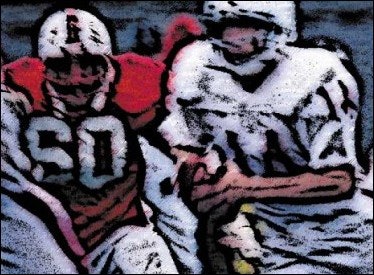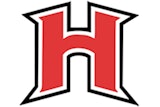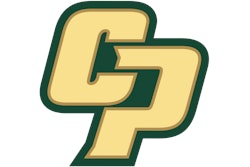Interscholastic sports administrators hoping to strike sponsorship pay dirt must learn to hone their approach strategies.

Although many school districts in the United States and Canada still do not allow athletic directors and coaches to pursue sponsorships within their communities, change is in the air. Unfortunately, many high school sports administrators lack the experience necessary to take advantage of this era of corporate sponsorships-or "partnerships."
How should high school sports administrators approach potential sponsors? To whom should they make their pitch-and what should they offer? What follows is an attempt to offer effective, yet tactful strategies for approaching would-be sponsors-suggested by company executives already active in the sponsorship of interscholastic sports. Assisted by two graduate students at Bemidji State University, I began by focusing on 10 current sponsors of the Bemidji (Minn.) High School athletic program that had a sport sponsorship budget of $2,500 or more:
- Coca Cola Bottling Company
- First National Bank
- Image Photography
- KBUN Radio
- Kobilka's Sporting Goods
- McDonald's
- Security State Bank
- Super 8 Motel
- Target
- The Market Place
Through our interviews with local representatives of these companies, we next contacted key decision-makers at the national level, focusing on companies that had a sport sponsorship budget of $500,000 or more:
- McDonald's
- Speedo
- Subway
- Super 8 Motel
- Target
Our discussions with representatives of both sponsor groups suggested a number of different strategies that administrators can use in their pursuit of corporate sponsorships at the local and state level. (These are noted at the end of each section.)

250+ Exhibitors & 190 Educational Sessions | abshow.com.
Selling High School Sports During our interviews with sponsors, it was interesting to hear that even on the local level, companies at times receive as many as 50 proposals a week. They're asked to financially support community events, provide merchandise to different community-based programs, sponsor an exhibit or even help a family that lost its home in a fire.
Not surprisingly, company representatives with whom we spoke ranked interscholastic sports highly against community events (parades, fairs, fundraisers), straight merchandising opportunities (company logo on T-shirts, cups and so on) and non-sport sponsorships (trade shows, exhibits, festivals). The primary reason? The sheer number of athletic events, and the number of community members viewing athletic events as opposed to an annual non-sports event. In addition, a company's exposure increases through television, radio and newspaper coverage, which also helps drive attendance.
Suggestions for Administrators
- When presenting a company with a sponsorship proposal, be aware that the company has probably received several proposals that week.
- Maintain an awareness of all events that will be taking place in your community-the type, location and target audience.
- Indicate to corporate decision-makers the number of sponsorship opportunities associated with your athletic program.
- Timing is important. If you are aware of a major community event coming up in the next month, your proposal should have been presented the month before.
The Corporate MotivationThe companies whose representatives we interviewed had a variety of motives for sponsoring interscholastic sport programs: the desire to support education, to enhance their company's public image or to increase their exposure, to name just a few. Although these were influential to decision-makers, upon further investigation we found certain motives took on heightened importance.
In alphabetical order:
Community Goodwill. Companies want to support organizations in the community in which their business operates.
Employee Goodwill. A company's administration likes to provide opportunities for employees to enjoy activities outside the company. Also, if a particular employee has a son or daughter involved with an activity needing financial assistance, the company may be inclined to support that activity.
Favorable Media: Local companies try to reach consumers in the community through newspaper and radio coverage, whereas national companies aim to reach as large an audience as possible through television coverage.
Image Enhancement. Decision-makers understand that supporting organizations in their community creates a favorable image among consumers of the company and its products and services.
Increase Brand Awareness. Companies look for opportunities to introduce products or services to consumers.
Increase Sales. Decision-makers at the national level indicated that unless they increase sales, they would not become involved in sport sponsorships. Decision-makers at the local level want to see an increase in sales, but are aware that a much lower sales impact can be expected at the local level.
Companies at the local level are more inclined to sponsor interscholastic programs as an opportunity to give back to the community in which they operate. Companies at the national level are more inclined to sponsor interscholastic sport programs to increase their brand awareness and sales.
Because of the importance to companies of increasing brand awareness and sales, particularly at the national level, media coverage is extremely important to high school sports sponsors. Radio and newspaper coverage, we were told, are preferred over television coverage by local sponsors; as one local sponsor indicated, local televised programs do not receive as much attention as other programs. National television coverage, of course, has the ability to reach more people, which is why national sponsors put more of an emphasis on television coverage.
Suggestions for Administrators
- At the local level, it is recommended that community goodwill and image enhancement be the focus when discussing sponsorship opportunities.
- At the regional level, it is recommended that increased brand awareness and sales be the focus when discussing sponsorship opportunities.
- Decision-makers are willing to indicate the benefits their company seeks from a sponsorship opportunity. Therefore, high school administrators are encouraged to discuss with decisionmakers how the sponsorship opportunity can benefit both the company and the athletic program.
- Contact representatives of television, radio and newspaper outlets to discuss upcoming high school sporting events. The purpose is to receive assurances from the media that your events will be covered.
Reaching Key Decision-MakersWho will review a high school athletic sponsorship proposal once it is presented to a company? Several people, in all likelihood. With small companies, you might be dealing directly with the owner, or with a mid-level manager. With large companies, you might be presenting your proposal to a CEO, a president, a vice president or a chairman-or, more likely, people further down the chain of command such as marketing or advertising directors, finance directors, managers or assistant managers. How much influence do all these decision-makers have in the evaluation process? More important, who makes the final decision to accept or deny the proposal?
Our surveys reveal that at the local and national levels, mid-level employees wield a considerable amount of influence, but that locally at least, the owner or president still makes the final decision. At the national level, marketing and sales VPs have the ability to red- or green-light a proposal without the direct oversight of the company CEO.
Suggestions for Administrators
- Contact the company and ask for the names and titles of those who will review proposals.
- Send the proposal to all middle- and upper-management decision-makers who will evaluate the sponsorship proposal, especially those who will have considerable influence further down the line.
- If possible, visit with the person or people who will make the final decision.
The Evaluation ProcessWhat happens to a proposal once it is presented to a company? It depends. Some companies have a formal evaluation process, while others do not. We found that local companies varied widely in this regard (seven had some form of evaluation process, three had none), while none of the five national companies had a set process in place.
Those local companies that indicated a formal or semi-formal evaluation process was in place described their review process in the following stages: Initial Contact. Most companies indicated that a high school athletic director or coach would need to request a sponsorship application. After completing the application, the athletic director or coach can submit the application and sponsorship proposal to the owner, president, director or manager.
Involvement. At this stage, the proposal is presented to other decision-makers in the company. Some companies indicated that the proposal may be presented to a board of directors or perhaps even division headquarters, depending on the proposal's complexity.
Evaluation. During this stage, decisionmakers evaluate the potential benefits the sponsorship may provide the company and the athletic program.
Clarification. Decision-makers may wish to contact the athletic director or coach to confirm who is going to be responsible for what.
Decision. Finally, companies decide whether to accept the sponsorship opportunity or decline it-although if the proposal has made it this far, it is likely to receive approval.
Follow-up. Most decision-makers indicated that they would prefer to receive some kind of feedback after the event.
How much time do companies typically take to evaluate a proposal? Before our research, we would have guessed that national companies would prefer more time, given the greater number of proposals they sift through every year. However, we found that the opposite was true: Local companies preferred two to three weeks of evaluation time, whereas national company decisionmakers believed one to two weeks was sufficient to make a decision.
Suggestions for Administrators
- Determine whether a company requires a sponsorship application to be submitted with the proposal.
- Clearly spell out the benefits that the company and your high school athletic program will receive through this sponsorship opportunity.
- Be ready to provide additional information should decision-makers require clarification.
What Sponsors Wants to KnowOver the past seven years, I have read copies of sponsorship proposals that were sent to companies asking for financial support of interscholastic sporting events. Some were short (one to three pages in length), while others were lengthy (10 or more pages).
Whether short or long, decision-makers say, they typically do not read a proposal from beginning to end when they first receive it. Rather, they start by skimming through the proposal for pertinent information. What's pertinent? It was surprising to learn that decision-makers at both levels want to see the same type of information.
In alphabetical order: Attendance. Decision-makers want to know approximately how many people will attend the sponsored event. They will also want your estimate of how many spectators will watch on television, listen on the radio or read about the event in the newspapers. Benefits. Decision-makers want to know the benefits the company will receive by becoming a sponsor-as well as how the sponsorship will benefit the organization in need.
Cost. Decision-makers want to know how much of a monetary or in-kind donation the company will need to give to become a sponsor, and an explanation of how the money, if applicable, will be spent.
Demographics. Decision-makers consider the age groups, gender and socioeconomic status of people attending the sponsored event. Do the event demographics match the company's target market?
want to know whether media coverage (newspaper, radio, television) is being offered as an incentive.
Product Usage. Some companies want to be allowed to provide product samples or sell products during the sponsored event.
Value-Added Promotions. Decisionmakers consider whether sponsoring the event will help promote the company and its products and services.
Decision-makers did not indicate a preference for long or short proposals. However, they did express a desire for complete information and minimal speculation.
Suggestions for Administrators
- Include as much information in the sponsorship proposal as necessary. However, be clear, concise and to the point.
- Include how the sponsorship can help promote the company and its products or services.
Obstacles to SponsorshipIn my experience discussing sponsorships with athletic directors and coaches, it seems that of every 10 companies that are approached, only one seriously considers becoming a sponsor.
The fact is, a number of obstacles can get in the way of partnerships.
In alphabetical order: Budget Constraints. Companies typically set aside a specific amount of money (5 to 10 percent of the annual budget) each year for charities, donations and sponsorships within their communities. Community Relations. Decision-makers will determine whether the sponsorship opportunity can become a public relations tool to achieve goodwill.
Loyalties. Some companies are committed to sponsoring sporting events in their communities, whereas other companies will have divided loyalties within the community, spreading their financial support among community events, merchandising and non-sport sponsorships.
Number of People Reached. Decisionmakers may feel the sponsorship opportunity doesn't reach a sufficient number of people.
Product Exclusivity. Companies are likely to pay a higher premium to receive exclusivity at a sponsored event. Companies may also seek exclusivity to prevent their competition from entering into a sponsorship agreement.
Sponsor Conflicts. Companies may not wish to enter into an agreement if their competition is already a signed sponsor. They may also already be committed to intercollegiate sports programs.
Time. Companies may balk at the contract length (whether long or short), or at the amount of media coverage (time and space allotted) that will be received during the sponsored event.
Suggestions for Administrators
- Determine where companies place their focus in supporting organizations (sports sponsorships, community events, merchandising or non-sport sponsorships). Specifically, seek companies that have not sponsored your athletic program in the past. This is an attractive opportunity for them and for you to start building a partnership.
- Be aware that companies typically set aside a specific amount of money to support organizations in their communities. Know also that this money may have already been given in support of other programs.
- Be sure to indicate the length of the contract and the amount of media coverage (time and space allotted) the company will receive.
- Determine whether the company is seeking exclusivity during the sponsored event. Take special care granting exclusivity-depending on the type of event, the company, your relationship with that company and the amount of money the company is inclined to give, high schools may lose more than they gain by granting exclusivity to a select few.
Measuring Sponsorship EffectivenessAs noted above, one of the biggest complaints of decision-makers is that athletic directors and coaches don't show enough appreciation for companies' support. Once the sponsored event is over, decision-makers say, they often do not hear from the high school sports administrator until the following year, when he or she walks through the door asking for more money.
This leads us to an important question: How do companies measure the effectiveness of a sponsorship arrangement? Local companies primarily are interested in feedback-from community members and fans, from the school (staff and students) and from company employees. National companies, on the other hand, want data, which they'll typically gather from marketing professionals and their representatives.
In alphabetical order: Feedback. Companies may conduct a survey of students, fans, community members or employees to receive feedback regarding the sponsored event.
Media Exposure. Decision-makers will evaluate whether the media exposure (time and space allotted) the company received during the sponsored event was comparable to the money given for the sponsored event.
On-Site "Feel." Decision-makers attending the sponsored event will try to assess whether their company is being portrayed positively or negatively. Payback. Companies expect to receive $5 in sales or exposure for every $1 given toward a sponsorship.
Sales. Companies will track the number of coupons used by patrons if coupons are promoted during a sponsored event.
Suggestions for Administrators
- Send a thank-you letter to all companies that sponsored your sporting event.
- Hold a recognition dinner for all companies that sponsored your athletic program during the year. If it's within your budget, present a plaque or certificate to all company representatives in attendance.
- Put together a written report that will be presented to all companies that sponsored your sporting event. The report should include feedback (positives and negatives) from students, school administrators, fans, community members, employees and company representatives associated with the sponsored event. Include in the written report any sales data the company might have completed after the sponsored event. (You will need to seek this information from a company representative.)
Sealing the DealIn order to expand and maintain partnerships with companies, one more element plays an important role-the human factor. Decision-makers indicated that they'd like to meet student-athletes, to visit with the people their sponsorship is benefiting. Isn't this why administrators seek corporate sponsorships in support of their athletic programs, to give opportunities for their student-athletes to participate? Administrators are therefore encouraged to stop by from time to time to say hi to corporate benefactors-perhaps even to offer an invitation to lunch.
When visiting with decision-makers, administrators should take along with them some of their student-athletes. The student-athletes could personally share their stories and indicate the benefits they receive by having the opportunity to participate in athletics. The human factor may be the single most important element in sealing the deal.




































